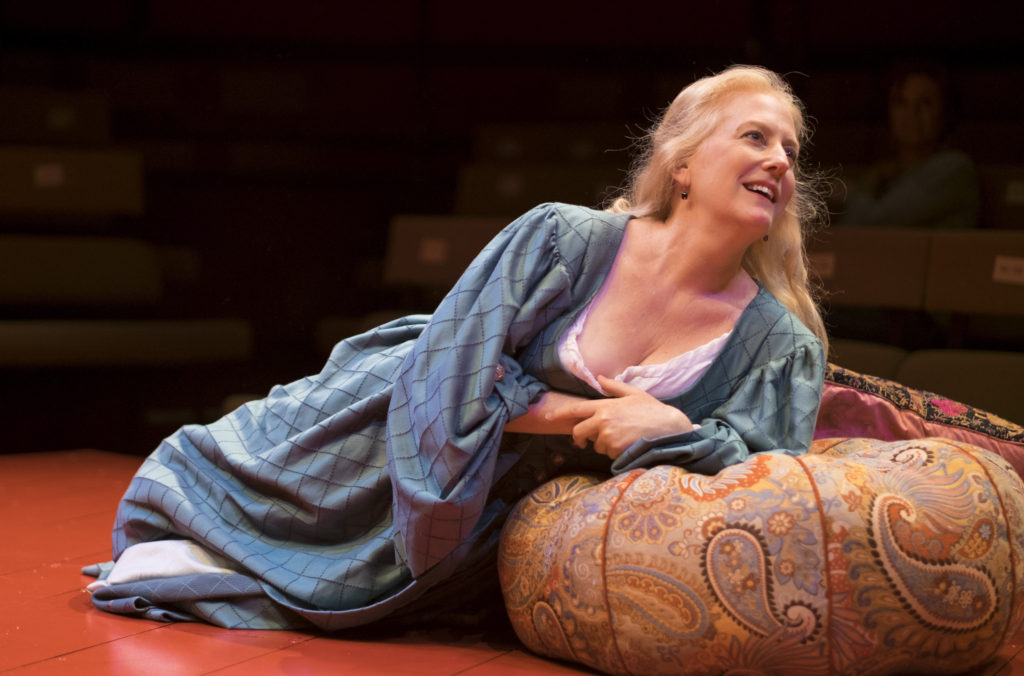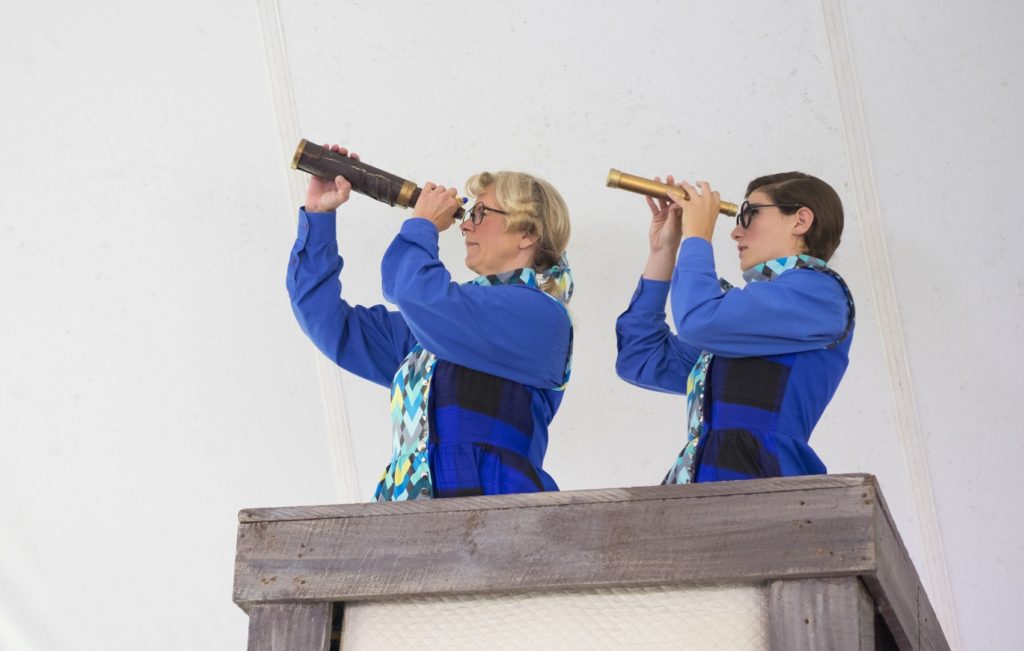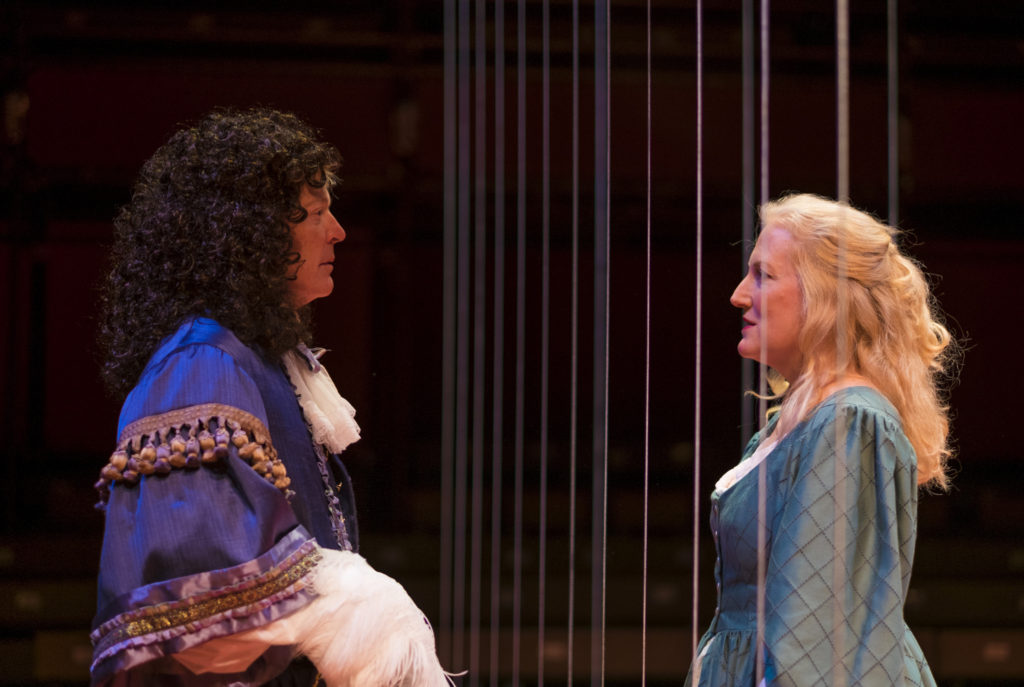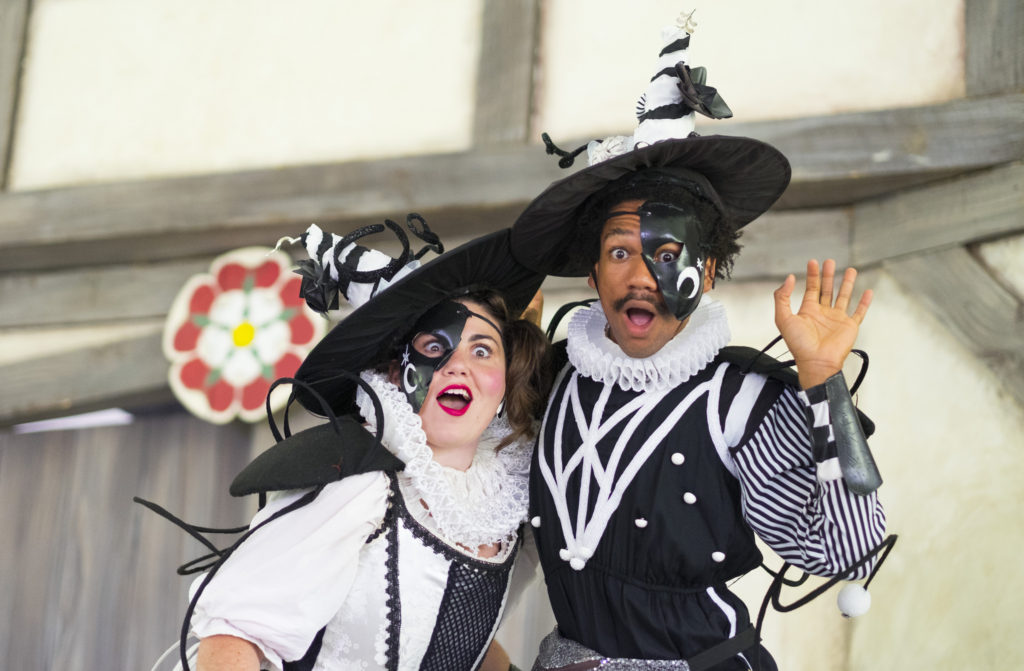Aphra Behn was probably the first Englishwoman to write professionally, that is, to make her living from writing. She’s best known as a playwright, though only recently rediscovered by audiences. While she wasn’t, as Shakespeare & Company’s website has it, “the first published woman playwright” (several women in Shakespeare’s time, a generation earlier, shared that distinction), her life and work inspired and encouraged other women writers in her own and later eras.
Virginia Woolf cited her influence in A Room of One’s Own, saying “All women together ought to let flowers fall upon the tomb of Aphra Behn … for it was she who earned them the right to speak their minds.” This month S&Co celebrates that Restoration rebel with two plays, one by her and one about her.
Behn was a prolific and eclectic writer – poetry, essays, fiction and translations as well as plays –but hardly a reclusive ink-stained wordsmith. Her short novel Oroonoko; or, The Royal Slave, a critique of the slave trade, was written after a visit to Surinam. King Charles II sent her to his war in Holland as a spy, but she then had to beg the crown for her expenses. On her return to England she turned to writing to support herself after spending some time in debtors’ prison.
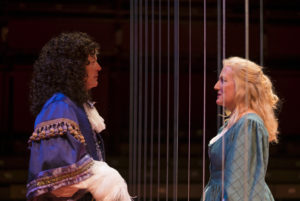 That’s where we find her at the opening of Or, – that’s Or, with a comma – currently running at S&Co. That punctuated title is an allusion to the practice of providing plays and other works with subtitles, as in her best-known play The Rover; or, The Banished Cavaliers, and it also provides the thematic basis of Liz Duffy Adams’ play.
That’s where we find her at the opening of Or, – that’s Or, with a comma – currently running at S&Co. That punctuated title is an allusion to the practice of providing plays and other works with subtitles, as in her best-known play The Rover; or, The Banished Cavaliers, and it also provides the thematic basis of Liz Duffy Adams’ play.
Secret agent to the king, or secret lover? Grieving widow, or devious social climber? (Her marriage to a Mr. Behn, who then died, may have been a fiction concocted for respectability.) Serious author, or serious libertine? (The answer to that one is both.)
The play’s dialogue at first is in iambic couplets, which the jailer mocks, only to be pelted with Aphra’s mocking rhymes. When the scene moves into her study, the script shifts to prose – the two styles corresponding to the prologues and acts in many of her plays.
In fact, Or,’s style and structure seem intended to mirror Behn’s work in general. Discussions of art, society and politics mingle with a knockabout, hide-in-the-bedroom sex farce, the whole revolving around Behn’s three key passions: as King Charles himself puts it, “poetry, theater and love.”
Yes, His Majesty is a character here, as is Nell Gwynne, the orange-seller turned actress, who was the king’s mistress and who, in the playwright’s imagining, meets Charles in Aphra’s apartment.
Tod Randolph is incandescent in the central role, a woman fairly bursting with artistic, intellectual and sexual energy – witty, ironic, free-spirited, angry when affronted and frustrated at the constant intrusions over a long night, when her latest play is unfinished and due in the morning.
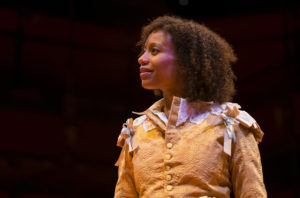 Two terrific actors take on the six other roles. Nehassaiu deGannes is sexy, ambitious Nell Gwynne, who arrives impishly dressed as a boy and soon seduces both the author and the monarch. She’s a mercurial delight in that part, while in her other two – Aphra’s waspish maid and her chatterbox aristocratic patron – she veers a little too close to caricatures that clash with her shrewd portrait of Nell.
Two terrific actors take on the six other roles. Nehassaiu deGannes is sexy, ambitious Nell Gwynne, who arrives impishly dressed as a boy and soon seduces both the author and the monarch. She’s a mercurial delight in that part, while in her other two – Aphra’s waspish maid and her chatterbox aristocratic patron – she veers a little too close to caricatures that clash with her shrewd portrait of Nell.
Allyn Burrows, a longtime company member, now director of the Actors’ Shakespeare Project in Boston, makes a welcome return to Lenix. He gives Charles II a kingly swagger tempered by a sardonic self-regard and a down-to-earth libido. He also plays the crusty jailer and the English exile Behn was tasked with turning into a double agent and who is now a wanted man. It’s his sudden appearance that sets the farcical sparks flying, and Burrows goes through a breathtaking series of quick changes with the aid of a miraculous trunk.
It can’t be a coincidence that women comprise the entire design team and most of the crew for this homage to a champion of a woman’s right to do art. Director Alice Reagan is joined by set designer Sandra Goldmark, costumer Govane Lohbauer, lighting designer Jeanette Oi-Suk Yew, sound designer Amy Altadonna and voice/dialect coach Gwendolyn Schwinke, as well as stage manager Hope Rose Kelly and the five directing, stage managing, costume and wardrobe assistants.
Moonstruck
The same happily applies to the play by Aphra Behn that’s running most afternoons in S&Co’s Rose Footprint. Adapted and directed by Jenna Ware, it boasts a woman composer (Emma Ayres), costumers (Brianna Wells and Emma Castle) and stage manager (Shannon McManus). (The slapstick fights are staged by Jonathan Croy, but he’s Ware’s husband so all’s well.) That’s the full extent of the crew, too, since the open-air tent theater has no scenery, lights or electronic sound – a do-it-yourself enterprise that evokes the Commedia dell’Arte roots of the shows performed there.
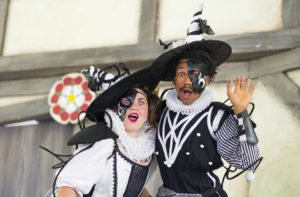 The Emperor of the Moon is such a play – a light-as-froth late work, written a couple of years before Behn’s death in 1689, adopting and adapting the comic conventions of Italian Commedia, complete with thwarted lovers, strict foolish parents, transparent disguises and crafty servants. It revolves around an amateur astronomer obsessed with the supposed inhabitants of the moon. His daughter and niece are in love with two fellows he doesn’t approve of, but an elaborate lunar charade mounted by those crafty servants helps bring about the inevitable happy end.
The Emperor of the Moon is such a play – a light-as-froth late work, written a couple of years before Behn’s death in 1689, adopting and adapting the comic conventions of Italian Commedia, complete with thwarted lovers, strict foolish parents, transparent disguises and crafty servants. It revolves around an amateur astronomer obsessed with the supposed inhabitants of the moon. His daughter and niece are in love with two fellows he doesn’t approve of, but an elaborate lunar charade mounted by those crafty servants helps bring about the inevitable happy end.
I haven’t always been taken with Ware’s Commedia adaptations over the years, some of which have tended toward overbroad performance and frantic running around just to stir up chaos. Her Emperor has energy and action aplenty, but feels more focused, and the physical comedy is wittier than mere pratfalls. As in the past, there’s lots of banter with the audience and, I think, more improvisation than usual. I adored the impromptu battle of words between two rival suitors (Gregory Boover and Marcus Kearns) which proceeds from a painful pun to snide remarks about student-loan debt.
Unlike Behn’s dramatis personae, the majority of the cast are women, including a cross-dressed Lori Evans as the batty moongazer. The 12-member ensemble includes most of the cast of S&Co’s Twelfth Night, which performs down the street at the company’s original home, the Mount.
Photos by Ava G. Lindenmaier
If you’d like to be notified of future posts, email StageStruck@crocker.com

